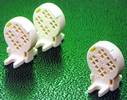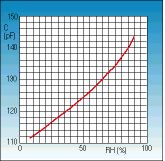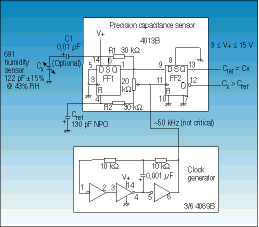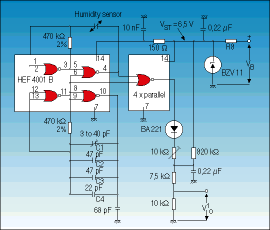

BC Component's capacitive humidity sensor has already proven itself over many years as one of the most effective and economical means of measuring and controlling humidity.
The sensor operates by sensing changes in capacitance of a thin-film polymer membrane as it absorbs moisture from its surroundings. Compared with many alternatives, it is simple to operate, highly reliable and fast. Also its long-term characteristics are unaffected by condensation of water on the membrane surface and other aggressive pollutants in the air.
Used in, for example, home hygrometers, weather stations, airconditioners, climate controllers and tumble dryers, it is capable of providing long, trouble-free service with minimum maintenance.
Designed for a measuring range between 10 and 90% relative humidity the sensor's relatively linear characteristic allows it to be easily incorporated into simple, inexpensive measuring circuitry.
Humidity control
Accurate measurement and control of humidity is an important requirement of today's world. The humidity of the air, ie the amount of water vapour it contains, influences not only our comfort but also the effectiveness of many professional and industrial processes.
The sensor is made up of a polymer film coated on both sides with a very thin air-permeable gold layer to form a capacitive element. The film is clamped between spring contacts inside a perforated plastic housing. Changes in relative humidity (RH) of the surrounding air cause a change in dielectric constant of the polymer film leading to a change of sensor capacitance. The relationship between sensor capacitance and relative humidity is a rather simple one which means that the sensor can easily be incorporated into an electrical measuring circuit.

Measuring circuitry
Measuring relative humidity using BC Component's sensor involves the detection of relatively small capacitance changes. Depending on the level of precision required, several measuring circuits are possible. The circuit of Figure 2, using a metastable flip-flop IC, offers simple measurement without linearisation.

For higher precision, the measuring circuit of Figure 3 incorporating a linearising network can be used. This circuit is suitable for connecting to an external power supply.

The measuring circuit may be calibrated using a saturated salt solution in a small airtight container to create a standard relative humidity environment (ASTM Designation E 104). The saturated salt solution should be prepared from reagent grade chemicals and reagent water produced by distillation or by ion exchange.
Potassium carbonate is usually chosen as a reference since its RH (43,2%) falls approximately in the middle of the measuring range of the sensor and because its temperature stability is high (from 43,1% RH at 0°C to 43,2% RH at 30°C).
Response time and hysteresis
The response time is defined as the time it takes for the sensor's reading to change by 90% of the total change following an immediate change of relative humidity. This obviously varies according to the relative humidity level, being shorter for low humidity levels than for higher levels. The sensor's response also shows hysteresis due to the difference between the speed of moisture absorption and the speed of evaporation. The hysteresis value in the specification is given for steps of 10% RH allowing a stabilisation time of 30 min between steps.
Features
The sensor is a tough component with high dielectric strength able to withstand both DC and AC voltages up to 15 V. A low dissipation factor means it can accept high-amplitude measuring voltages without overheating. In contrast to other technologies it meets the stringent static-discharge specifications.
The sensor's dissipation factor increases with humidity. It also falls with measuring frequency to a minimum value at around 1 kHz after which it increases again. When working at low levels of humidity (<50% RH), it is therefore possible to use relatively low (<1 kHz) measuring frequencies. But for the most reliable results over the total operating range of the sensor, measuring frequencies should be between 1 kHz and 1000 kHz.
Although the sensor is virtually unaffected by most air pollutants including ammonia, the vapour of some solvents such as acetone can attack the foil and should be avoided when building the sensor into an assembly. Dusty environments should also be avoided since the hygroscopic properties of some dust particles can affect sensor reading if they build up on the surface of the foil.
| Tel: | +27 11 458 9000 |
| Email: | [email protected] |
| www: | www.electrocomp.co.za |
| Articles: | More information and articles about Electrocomp |

© Technews Publishing (Pty) Ltd | All Rights Reserved